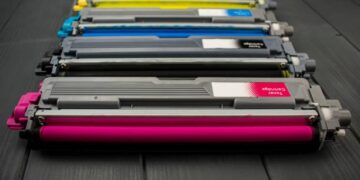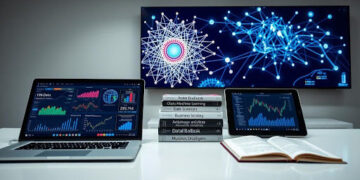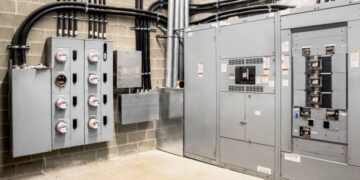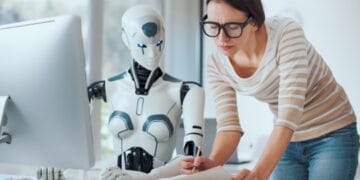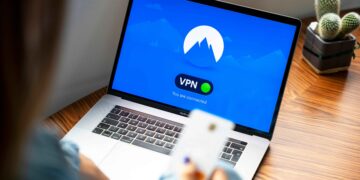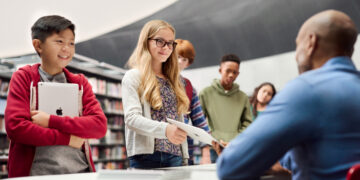Technology has always been a catalyst for change in education, but few innovations have made an entrance into classrooms as bold as AI art generators. These tools, once confined to the realm of tech enthusiasts, are beginning to redefine what creativity means for students and educators alike. With their ability to create visually stunning pieces with just a few inputs, free AI art generators, and AI image generators are opening up new worlds of artistic exploration.
This blog will explore how AI art generators are reshaping creative learning in classrooms, their practical applications, and the ethical considerations we need to address for responsible use. By the end of this post, you’ll gain a clear picture of how these tools are preparing students for a future deeply intertwined with artificial intelligence.
Understanding AI Art Generators
AI art generators are software tools powered by artificial intelligence designed to create artwork based on user inputs. Algorithms analyze patterns, shapes, and colors present in existing art and combine them to produce entirely new creations. From digital paintings to abstract concepts, an AI image generator can create just about any artistic output you can imagine.
Many of these tools, such as DALL-E, MidJourney, and NightCafe, have become widely recognized and are even accessible for free. These platforms help users create stunning visuals by allowing them to describe what they want in simple text prompts. For classrooms, this means that students can watch their imaginative ideas come to life without needing intricate technical skills or expensive tools.
What makes AI art generators particularly exciting is their ability to go beyond simple replication. They can mimic various artistic styles, blend elements of different eras, and even offer unique interpretations of abstract ideas. This capability introduces endless possibilities for students to experiment creatively and expand their artistic horizons.
Benefits of Creative Learning in Classrooms
AI art generators are not just digital toys; they are valuable educational tools that can enrich creative learning in ways traditional methods may not be able to achieve. Here are some of the most significant benefits:
Breaking the Creative Block
Every artist, student, or professional has faced the dreaded creative block. AI art generators can act as a springboard for fresh ideas by offering initial designs and inspiration. For instance, when a student is unsure where to start on a project, entering a vague concept into a free AI art generator can ignite their creativity and provide a foundation upon which to build.
Exploring Diverse Artistic Styles
AI image generators have access to a vast database of artistic styles, from centuries-old techniques to contemporary digital designs. Students can learn about and experiment with different styles in a way that’s interactive and immediate. Want to combine Van Gogh’s post-impressionism with modern pop art? An AI art generator can show students what that might look like in seconds.
Encouraging Inclusivity and Accessibility
Not all students are skilled in traditional art forms like drawing or painting, and that’s perfectly okay. AI art tools help level the playing field by making creativity accessible to everyone, irrespective of their skill level. These tools are also free or low-cost, ensuring schools with limited budgets or resources can still offer artistic opportunities to students.
Enhancing Problem-Solving and Critical Thinking
AI art generators work as a collaborative tool between humans and machines. Students must refine their text prompts, experiment with iterations, and choose final designs. This back-and-forth fosters problem-solving and critical thinking as they learn to use AI as an extension of their creative process.
Bridging the Gap Between Art and Technology
Integrating AI into creative learning introduces students to the intersection of art and technology, equipping them with skills relevant to today’s workforce. Understanding AI’s role in fields like design, marketing, and game development provides students with a glimpse into professional paths they may never have considered.
Practical Applications and Examples
The use of AI art generators in classrooms is not a distant future dream; it’s happening right now. Here are a few practical ways teachers and students are incorporating these tools into the learning experience:
Digital Art Assignments
Teachers are using free AI art generators to supplement traditional art lessons. For example, students can generate digital landscapes or abstract designs with AI and then use those outputs as inspiration for their own physical or digital artwork.
Storytelling and Creative Writing Integration
AI art generators are particularly effective for storytelling. Imagine a student is writing a short story and needs a compelling book cover or character illustration. By providing descriptions through an AI image generator, they can create visuals that bring their narrative to life.
Learning About Historical Art Styles
Instead of merely looking at slides of Baroque or Renaissance art, students can interactively create AI-generated images in those styles. This hands-on experience makes learning about art history more engaging and immersive.
Cross-Curricular Integration
AI art generators aren’t just for art classes. They can also be used in science or geography lessons to create visual representations of abstract concepts like the solar system, global warming, or the water cycle.
Class Competitions
Teachers can organize a “prompt-writing” competition in which students use a free AI art generator to create the most unique and visually appealing designs. This is an engaging way to spark creativity and team collaboration.
Addressing Concerns and Ethical Considerations
While AI art generators are revolutionizing creative learning, they also bring concerns that need to be addressed to ensure ethical and responsible use in classrooms.
Copyright and Plagiarism
One of the most pressing issues with AI art tools is the question of copyright. Since AI is trained on vast collections of existing artwork, there’s an ongoing debate about the ownership of the generated work. Teachers should educate students about intellectual property rights and use AI-generated art in ways that respect original artists.
Dependency on Technology
Another concern is the potential for students to become overly reliant on AI tools, which may limit their ability to develop their creative skills. Teachers can strike a balance by incorporating AI into the creative process without making it the sole creator.
Bias in AI Training
AI models are only as good as the data they are trained on. If the training data lacks diversity, the outputs may unintentionally reflect those biases. Educators should be aware of this and encourage students to evaluate AI outputs critically.
Data Privacy
Free AI art generators often require users to upload data or provide text prompts, which can raise privacy concerns. Schools and educators must ensure that tools used in classrooms comply with privacy standards.
Preparing for the Future of AI in Creative Education
The integration of AI in classrooms is preparing students for a world where artificial intelligence will be deeply ingrained in every industry. By using tools like AI art generators, they are not just learning about creativity; they are developing problem-solving, technological literacy, and collaborative skills.
Teachers and institutions play a crucial role in ensuring that these tools are used ethically, creatively, and effectively. It’s not just about creating beautiful visuals or completing projects faster; it’s about equipping the next generation with the ability to think critically and adapt seamlessly to a tech-driven world.
Whether you’re a teacher, parent, or student, exploring AI art generators is an exciting way to expand your creative toolkit. If you’re curious to try it out, most free AI art generator platforms are just a Google search away. Start exploring and watch how these tools transform the creative potential of classrooms everywhere.
Conclusion
AI art generators are playing a pivotal role in revolutionizing creative learning in classrooms. By blending technology with creativity, these tools offer students an innovative way to express themselves and explore new artistic possibilities. With the ability to create dynamic visual content, AI art generators provide an inclusive, engaging, and accessible platform for all learners, regardless of their skill levels. As educators incorporate these technologies into their teaching methods, they not only enhance students’ artistic abilities but also foster critical thinking, collaboration, and problem-solving skills. Moving forward, the integration of AI into creative learning will likely continue to evolve, further shaping the future of education by inspiring the next generation of artists, thinkers, and innovators.






























